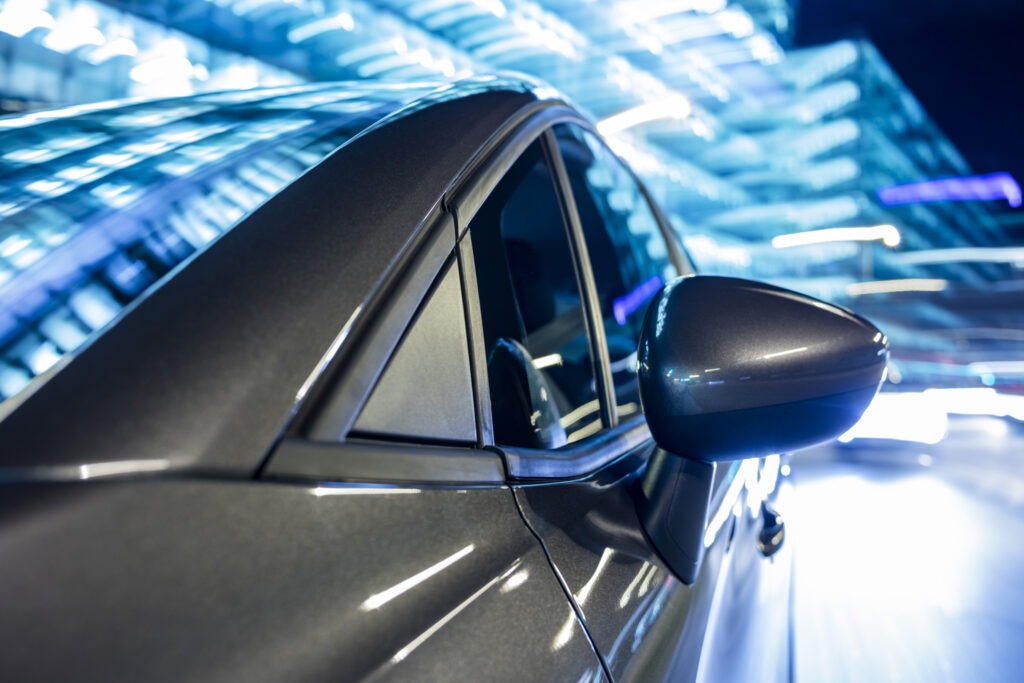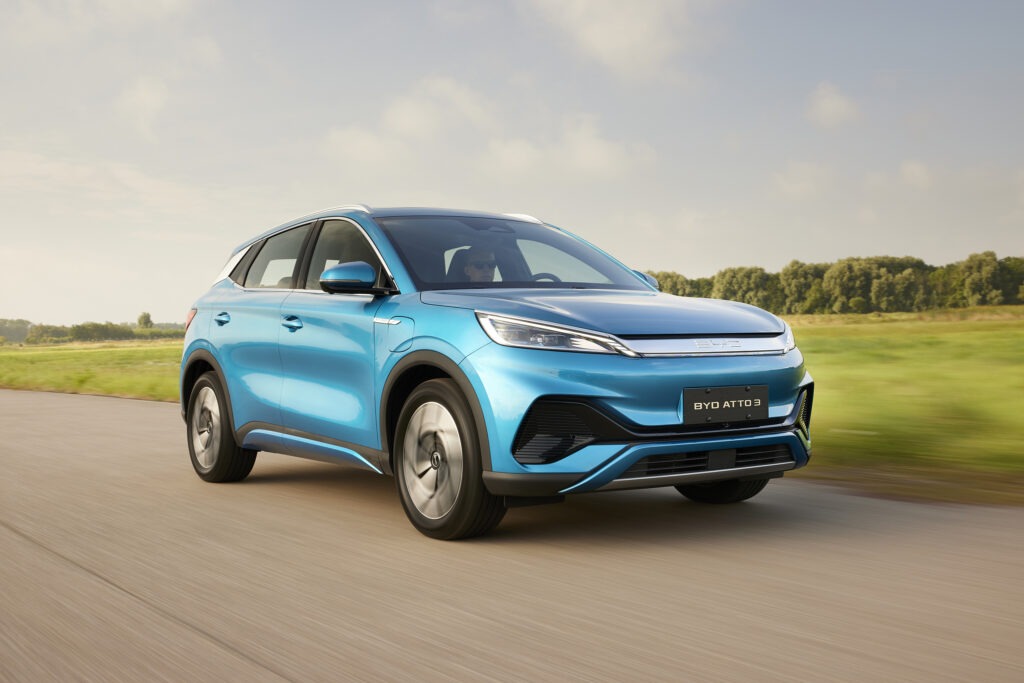BYD maintains strong lead in Chinese EV market during August
27 October 2023

Over 750,000 electric vehicles (EVs) were delivered in China during August, up 36% year on year. José Pontes, data director at EV-volumes.com, explores the figures behind the top models and carmakers.
EVs, made up of battery-electric vehicles (BEVs) and plug-in hybrids (PHEVs), took a 39% share of China’s new-car market in August. BEVs alone accounted for 26%. This kept the 2023 EV tally at 36% in the first eight months of 2023, with BEVs holding 24% alone.
At this rate of growth, China’s EV market share can be expected to reach over 40% by the end of 2023. The importance of this new-car market is highlighted by the fact that China accounted for 60% of worldwide EV registrations in August.
Looking at the country’s wider automotive market, plug-in vehicles took the top four best-seller spots in the month. The most popular internal-combustion engine (ICE) powered vehicle only appeared in fifth place.
Breaking down sales by vehicle segments, there has been little change in recent months. The A (city cars), B (subcompacts), and D (midsize) segments are heavily electrified, while the C (compact) and E (full size) segments still have a strong ICE presence. The E-segment is still heavily influenced by premium vehicles, with German brands including Audi, Mercedes-Benz, and BMW, still holding firm.
BYD continues to lead
The BYD Song was the best-selling new car in China, scoring 56,743 registrations in August. A record 9,043 of these belonged to the BEV version. With average registrations currently over 50,000 units a month, it is quite likely that the Song will end the year as the country’s top model.
Considering the competition from other BYD models, the Frigate 07 PHEV has failed to make a dent with its sales, while its premium cousin, the Denza N7, also does not seem able to divert a sizable level of demand away from the Song. A primary reason could be that it lacks a PHEV version. The real internal competition could come from the upcoming Song L, BYD’s take on the Tesla Model Y. However, this should only impact sales next year.
The Tesla Model Y took second place in August, recording 51,117 registrations, as demand was apparently spurred on by price cuts. At a time when Chinese carmakers are in peak form, Tesla is the only foreign brand able to keep up the pace of domestic carmakers.
The Model Y’s most immediate threat comes from within its own stable, namely the refreshed Tesla Model 3. While the refresh was not as deep or disruptive as some expected, the new interior and updated specs could allow the BEV to start cannibalising volume from its crossover sibling in the coming months.
Thanks to a refresh and price cut, the BYD Qin Plus has been rejuvenated and its sales have jumped back up. The model reached 42,808 registrations in August, with the BEV version alone responsible for 11,654 units. As prices now start at ¥100,000 (€12,950), demand is strong once again, despite fierce internal competition (the BYD Seal for the BEV version and the Destroyer 05 for the PHEV version).
BYD’s lower-priced midsize sedan can be expected to keep posting strong results, at the cost of its most expensive siblings. It should not have a problem keeping direct competitors at a safe distance, with the likely exception of the refreshed Tesla Model 3, in the peak-quarter month of December.
With 34,841 registrations, in only its fourth full month on the market, the BYD Seagull keeps ramping up quickly. It could win a best-seller position in China by the end of the year, but it is overseas that the EV could be a truly disruptive force. Latin America and Africa are waiting for a good quality, affordable EV to hit the mainstream. India and Europe could also see the Seagull take off, where decent, small, value-for-money BEVs are scarce.
Starting at ¥74,000 and sitting between the A and B-segments with a purposeful angular design, the model profits from BYD’s blade batteries, in 30kWh and 39kWh capacities. The only vehicle capable of rivalling it is the slightly larger Wuling Bingo, which starts at ¥60,000. But at that price, it only comes with a 17kWh battery and no DC charging option.
For a similar-spec Bingo, equipped with a 32kWh battery and DC charging, the price tag increases to ¥74,000, the same price as the BYD Seagull. So, both seem equally competitive in terms of spec, but the Seagull benefits from the current strength of the BYD brand, something that the Wuling EV lacks.
The BYD Dolphin scored 31,096 registrations in August. With exports starting to get underway, it seems BYD is content to have the model hitting roughly 30,000 units a month in its domestic market. This should still enable a regular top-five spot. The Dolphin can be expected to become BYD’s second big player overseas, joining the current Atto 3 and the upcoming Seal.
New records and rising brands
Looking at the rest of the table, the sixth-place GAC Aion Y posted 26,713 sales, a new record. It not only beat the BYD Yuan Plus but is now looking to disrupt the BYD/Tesla duopoly within the top five. In 14th, the BYD Destroyer 05 scored a record 12,092 registrations.
Meanwhile, Li Auto placed all three of its models in the top 20, with the L9 seven-seater achieving another best-ever month (10,933 registrations). The startup brand appears to have a strong trio of vehicles on its hands. The most affordable model in its line-up should keep improving its standing in the near future.
Li Auto has set a bullish sales target of 400,000 units for this year, 800,000 for 2024 and 1.6 million in 2025. For these targets to be met, the L6, due to be launched sometime next year, will be a crucial part of the puzzle.
The other big news is Leapmotor’s C11 joining the table in 19th, with a best-ever performance of 10,209 units. That was mostly thanks to the BEV version, which amassed a record 6,602 registrations, providing much-needed volume for the startup.
Outside the table, XPeng’s G6 midsize SUV gained 7,068 registrations, in only its second month on the market. The new model should join the top 20 soon, as its ramp-up continues. The struggling startup threw everything at the G6, so it may finally have a winner on its hands.
Nio’s new generation ES6 sold quite well, hitting 8,601 units. It joins another successful model, the ET5, which is available in an estate version. This model makes up roughly a third of all ET5 sales, an amazing result in a market which is usually averse to this body type.
Hozon’s Neta Aya landed with 5,609 units. The Aya is essentially a refreshed Neta V, so it will be interesting to see how it performs over time. Then there is Changan’s new premium brand, Deepal. Its new S7 reached a record 8,891 registrations.
Finally, from non-domestic brands, VW ID.3 recorded 7,485 registrations, confirming the effectiveness of price cuts. Then there is the BMW i3, which is the China-only BEV version of the BMW 3-Series. After a slow start, it hit 5,290 registrations in August, off the back of a recent price cut.
BYD Song well ahead
Between January and August, the BYD Song stayed well above its competition. Meanwhile the runner-up BYD Qin Plus kept the third-place Tesla Model Y at bay.
Outside the top three, the BYD Dolphin took fourth, switching places with the Yuan Plus. The BYD Seagull continued its unstoppable rise, jumping four positions in August to 11th. It can be expected to jump a few more positions by the end of the year.
In the second half of the table, another BYD model is on the rise. The Destroyer 05 climbed one position to 18th, switching places with the Li Auto L9. Despite this setback, all three Li Auto models made it to the top 20 in the first eight months of 2023. Apart from BYD, no other brand put this many models in the table. In four years, Li Auto has gone from zero to 500,000 deliveries.
BYD on track for 10th win
The BYD brand remained in a stable leadership position with a 35.2% market share and is looking to win its 10th EV carmaker title this year, while off-peak Tesla (8.4%) was stable in second place. Third-place GAC Aion continued its slow but steady rise, climbing to 6.6%, a slight increase from its 6.5% in July. Meanwhile, SGMW dropped its share from 5.9% in July to 5.6% in August.
In fifth, Li Auto keeps rising (4.5%, up from 4.4%). The startup is going from strength to strength, achieving consecutive record sales and is set to become a force to be reckoned with. Despite staying off the radar of many analysts, Li Auto’s growth potential, price points, and margins are the most promising among current EV startups.
This is a perfect storm for legacy OEMs in China. BYD and GAC are perusing mainstream volumes, Tesla is hitting the midsize/premium space, and Li Auto has eaten its way into the last bastion of profitability for foreign OEMs in the country: full-size models.
Looking at OEMs with brands grouped, BYD remains in the lead with a 36.9% share of the market. Meanwhile, in second, Tesla (8.4%) stayed stable. SAIC was down to a 7.2% share, which allowed it to retain the last podium position.
In fourth, GAC (7.1%) is rising quickly and poses a threat to SAIC. One step down in fifth, Geely–Volvo is slowly growing, now hitting a 5.8% share. In sixth, Changan (4.5%) has to contend with Li Auto (4.5%) which is looking to surpass it soon.



